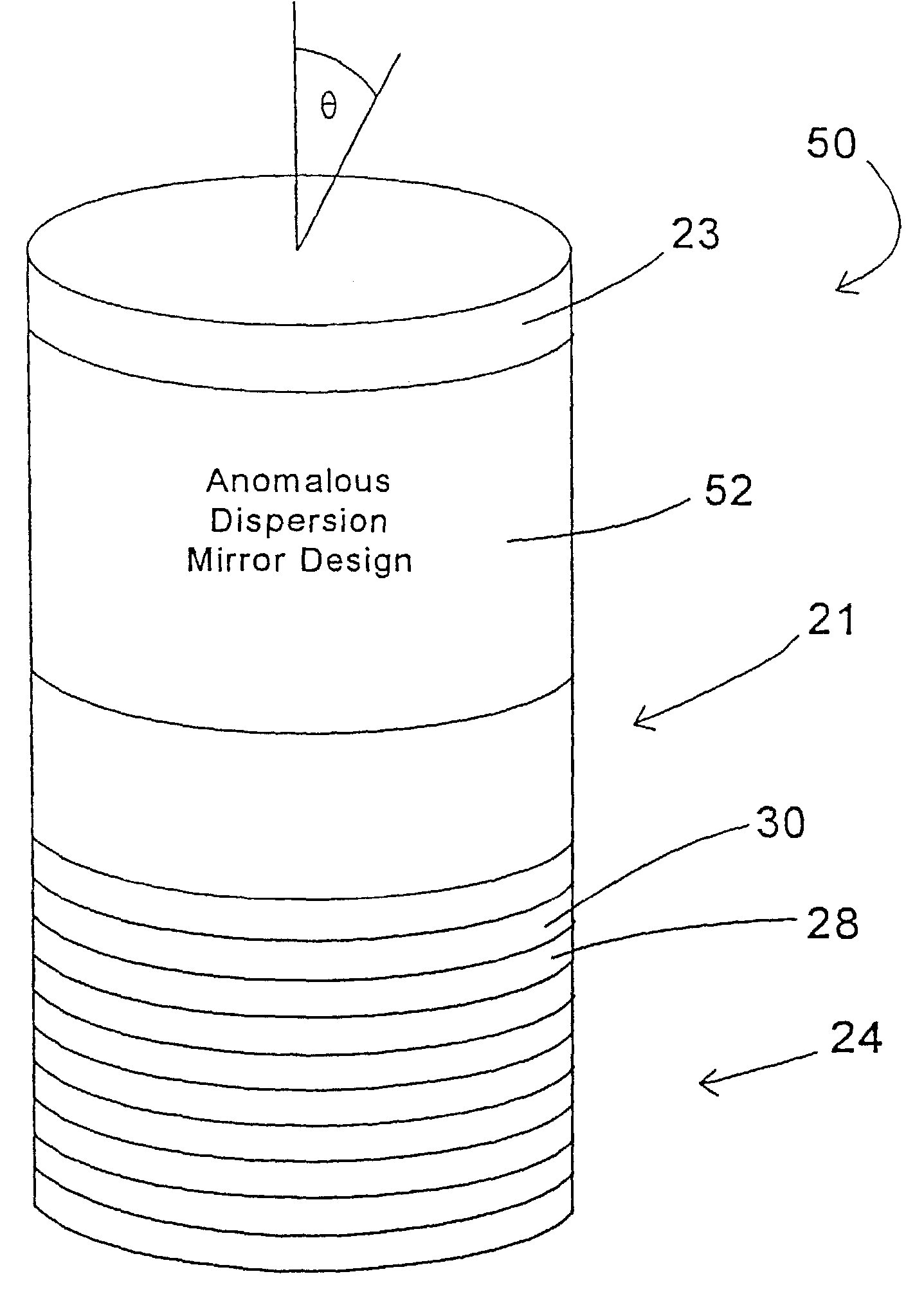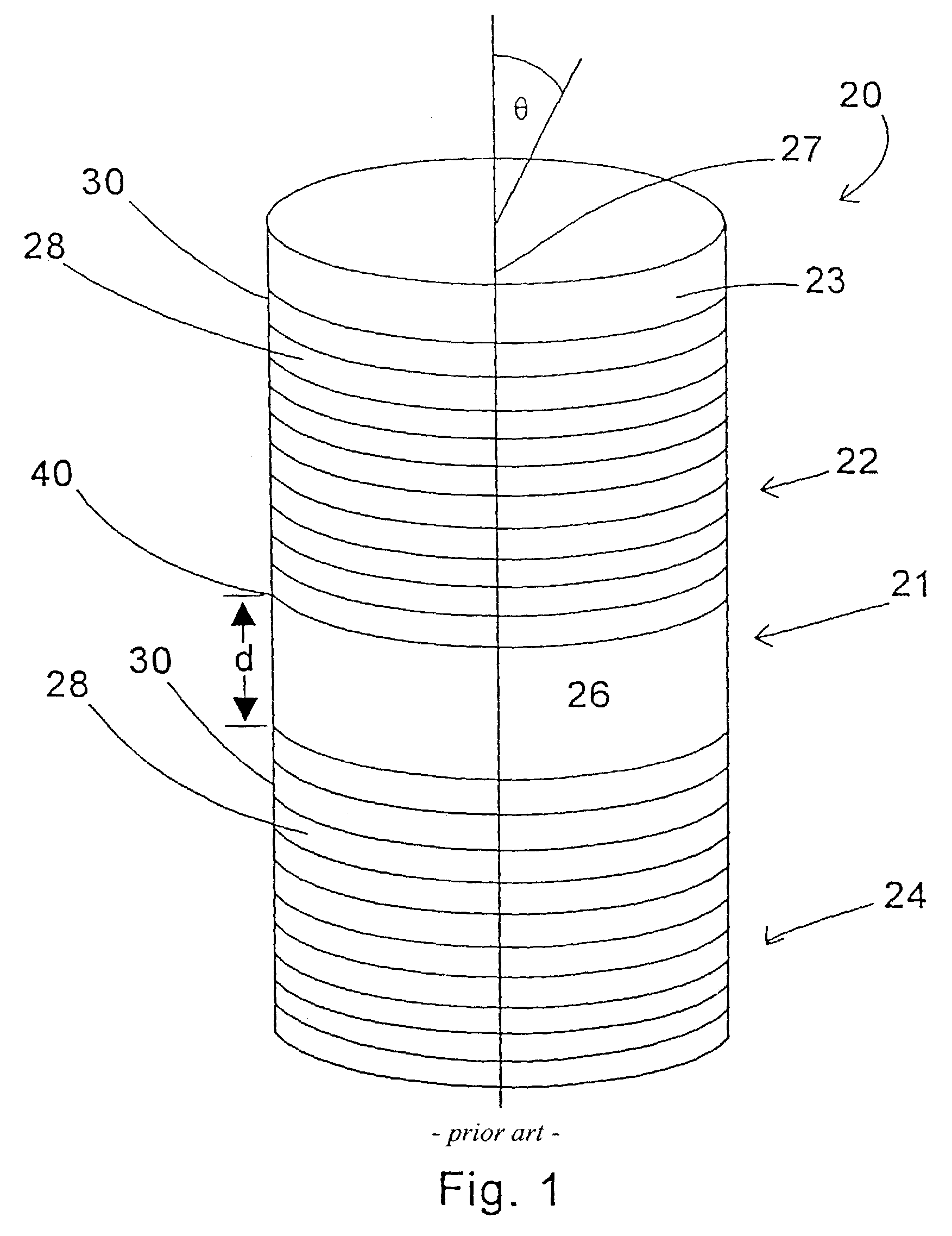Resonant microcavity display utilizing mirrors exhibiting anomalous phase dispersion
- Summary
- Abstract
- Description
- Claims
- Application Information
AI Technical Summary
Benefits of technology
Problems solved by technology
Method used
Image
Examples
Embodiment Construction
[0012]FIG. 1 illustrates a resonant microcavity 20, with an active region 21 preferably containing a phosphor, and front and back mirrors 22, 24, and grown on a substrate 23. For discussion purposes the phosphor is assumed to be transparent and isotropic since this corresponds to the majority of phosphors. While this embodiment has an active region containing an isotropic, transparent phosphor, other embodiments can have active regions of different designs. By way of example, the active regions could be comprised of anisotropic phosphors, semiconductor devices, quantum wells, organic materials, and / or other inorganic materials.
[0013]The spontaneously emitted light from the phosphor in the active region 21 can be described by the use of cavity quantum electrodynamic (QED) theory. To first order, cavity QED predicts that the spontaneous emission into a certain optical mode is proportional to the intensity of that mode at the location of the emitter. This effect is described by Fermi's...
PUM
 Login to View More
Login to View More Abstract
Description
Claims
Application Information
 Login to View More
Login to View More - R&D
- Intellectual Property
- Life Sciences
- Materials
- Tech Scout
- Unparalleled Data Quality
- Higher Quality Content
- 60% Fewer Hallucinations
Browse by: Latest US Patents, China's latest patents, Technical Efficacy Thesaurus, Application Domain, Technology Topic, Popular Technical Reports.
© 2025 PatSnap. All rights reserved.Legal|Privacy policy|Modern Slavery Act Transparency Statement|Sitemap|About US| Contact US: help@patsnap.com



